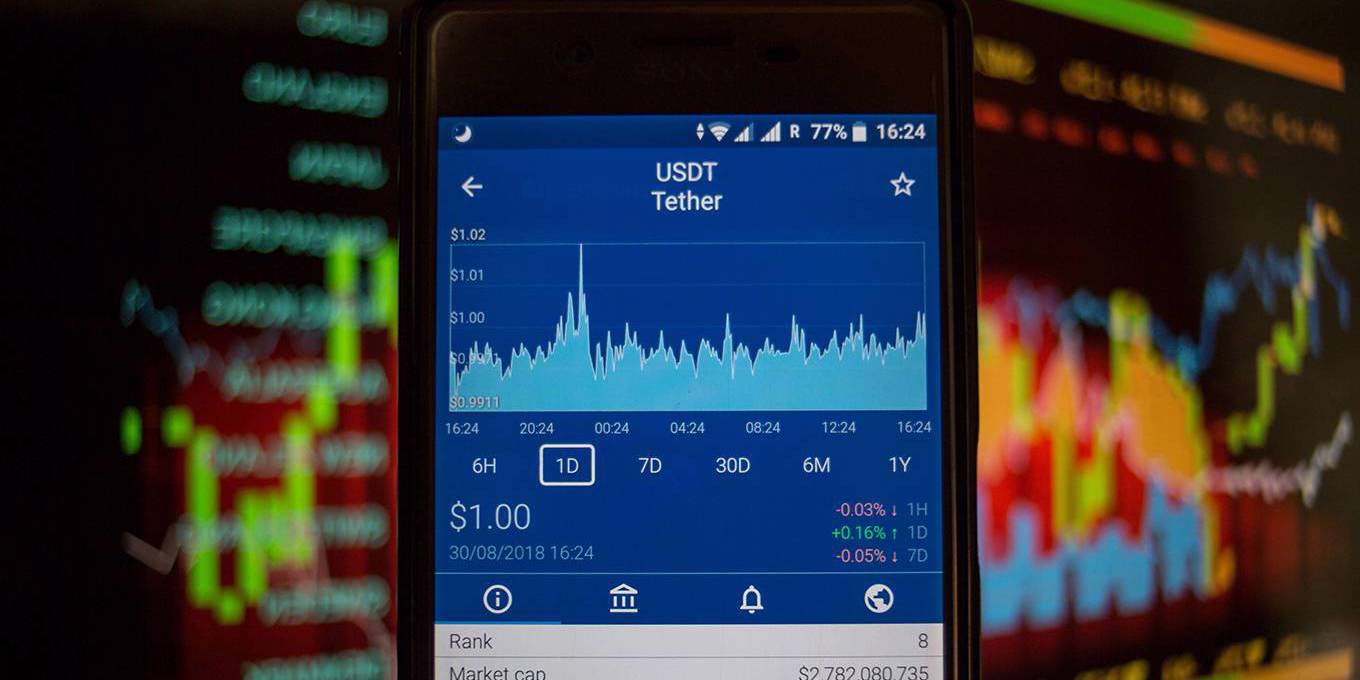
Recent price implosions have shown that not all so-called stablecoins are so stable after all. As policymakers draft regulations to bring some order to the crypto industry, they should focus on the economic functions that various digital tokens perform, rather than on formal legalistic labels.
NEW YORK – With no intrinsic value, no backing by anything, and a freely floating price, Bitcoin is too volatile to be appealing as a medium of exchange or a store of value. These flaws have given rise to other cryptocurrencies that are convertible on demand at a set price to something that is supposed to be more stable. But the British Financial Conduct Authority has rejected calling them “stablecoins,” on the grounds that their purported stability is merely aspirational. Policymakers in the European Union and the United States also will need to consider these issues as they draft new laws regulating cryptocurrencies.
Among the different types of cryptocurrencies using the “stablecoin” moniker, some are backed by assets and some seek to maintain their value algorithmically. But the only type deserving of the name is tokenized e-money on the blockchain, fully backed by off-chain liquid financial assets with stable values.
One example is Tether, the third-largest cryptocurrency by market capitalization. According to its website, “All Tether tokens are pegged at 1-to-1 with a matching fiat currency (e.g., 1 USD₮ = 1 USD) and are backed 100% by Tether’s reserves.” Currently, about 86% of Tether’s reported reserves are in cash or short-term liquid assets. Tether tokens can be used as a medium of exchange or as collateral in decentralized finance (DeFi). But there have been controversies over whether holders have a legal right to convert their tokens one-to-one with the dollar, and whether Tether is adequately backed and would be able to withstand a mass withdrawal.
The Responsible Financial Innovation Act, proposed by US Senators Cynthia Lummis of Wyoming and Kirsten Gillibrand of New York, might provide some regulatory relief. It refers to instruments like Tether tokens as payment stablecoins, which it would require to be 100% backed by high-quality liquid assets, redeemable at par, and subject to public disclosure of the balance sheet. This insistence on transparency and supervisory scrutiny promises to benefit both consumers and Tether. Payment stablecoins are like tokenized bank deposits. Their issuers should have access to the central bank’s “lender of last resort” facility and to something akin to deposit insurance.
A second type of stablecoin is backed by off-chain, possibly illiquid, financial or real assets with variable valuations, including commodities. For example, a gold-backed stablecoin might be convertible to an ounce of gold. Such coins could be attractive to those who would otherwise hold gold, because they are more portable than gold and are divisible and easily transferable. As with physical gold, the dollar value of these assets can swing widely, which is why we refer to them as (honest) riskycoins. An informed public should be allowed to choose how much risk to bear, but regulators also must ensure that an issuing entity’s claim about a token’s backing is truthful.
A third category is reserved for stablecoins that are backed only by other cryptocurrencies. An example is MakerDAO’s token Dai, which is soft-pegged to the dollar. The original holder of Dai trades Ethereum-based assets for it. The collateral must exceed the value of the Dai, and it is held in escrow until the Dai are returned. If the value of the collateral falls below the value of the Dai (at its dollar peg), the loan is called and the collateral is liquidated.

Subscribe to Project Syndicate
Enjoy unlimited access to the ideas and opinions of the world’s leading thinkers, including long reads, book reviews, topical collections, short-form analysis and predictions, and exclusive interviews; every new issue of the PS Quarterly magazine (print and digital); the complete PS archive; and more. Subscribe now to PS Premium.
The allure of coins backed by other cryptocurrencies is that over-collateralization (typically 150%) provides a buffer that makes the coin less risky than the collateral cryptocurrency. But even with a large buffer stock, these coins are not fundamentally different from Bitcoin, because they are (over)collateralized with assets that lack intrinsic value. With the peg, they are riskycoins pretending to be stablecoins, what we call dodgycoins. Here, regulators’ task is to turn them into honest riskycoins by ensuring full transparency and prohibiting any firm peg to an off-chain currency.
Yet another type of “stablecoin” is not backed by anything. Instead, it relies on a “mint-and-burn” algorithm that adjusts the currency supply to maintain a peg between the coin and the dollar. Again, since there is no external value anchor, the dollar peg is vulnerable to a run if enough coin holders lose confidence in it. The risks therefore should be made clear in any prospectus, and the peg should be described as an aspiration rather than a guarantee (lest it fall into the dodgycoin category).
One recent hybrid stablecoin scheme relied on a combination of backing with another cryptocurrency and an algorithmic “mint-and-burn” mechanism. The blockchain protocol and payment platform Terra maintained a freely floating cryptocurrency, Luna, and a stablecoin, UST, pegged at $1. Users could swap one dollar worth of Luna for one UST.
When the UST rose above a dollar and users swapped Luna for UST, the traded amount of Luna was burned and more UST were minted. But when the UST fell below a dollar, users swapped UST for Luna, and UST was burned and Luna was minted. Luna went from a peak price of $116.39 on April 5, 2022, to nearly zero on May 12, 2022. UST was worth a penny on June 19, 2022. It is now clear that UST was a complex, highly risky instrument pretending to be a stablecoin. When regulators permit such complex, hybrid riskycoins to be marketed as pegged, that makes them dodgycoins indeed.
The regulatory challenges posed by cryptocurrencies and DeFi are manageable, provided that policymakers focus on the economic functions and risks of the e-money tokens and other crypto assets themselves. They must not be taken in by the formal, legalistic labels and the institutions that happen to be issuing these instruments. Most are pursuing regulatory arbitrage. Policymakers must not make it easy for them.
This news is republished from another source. You can check the original article here

Be the first to comment